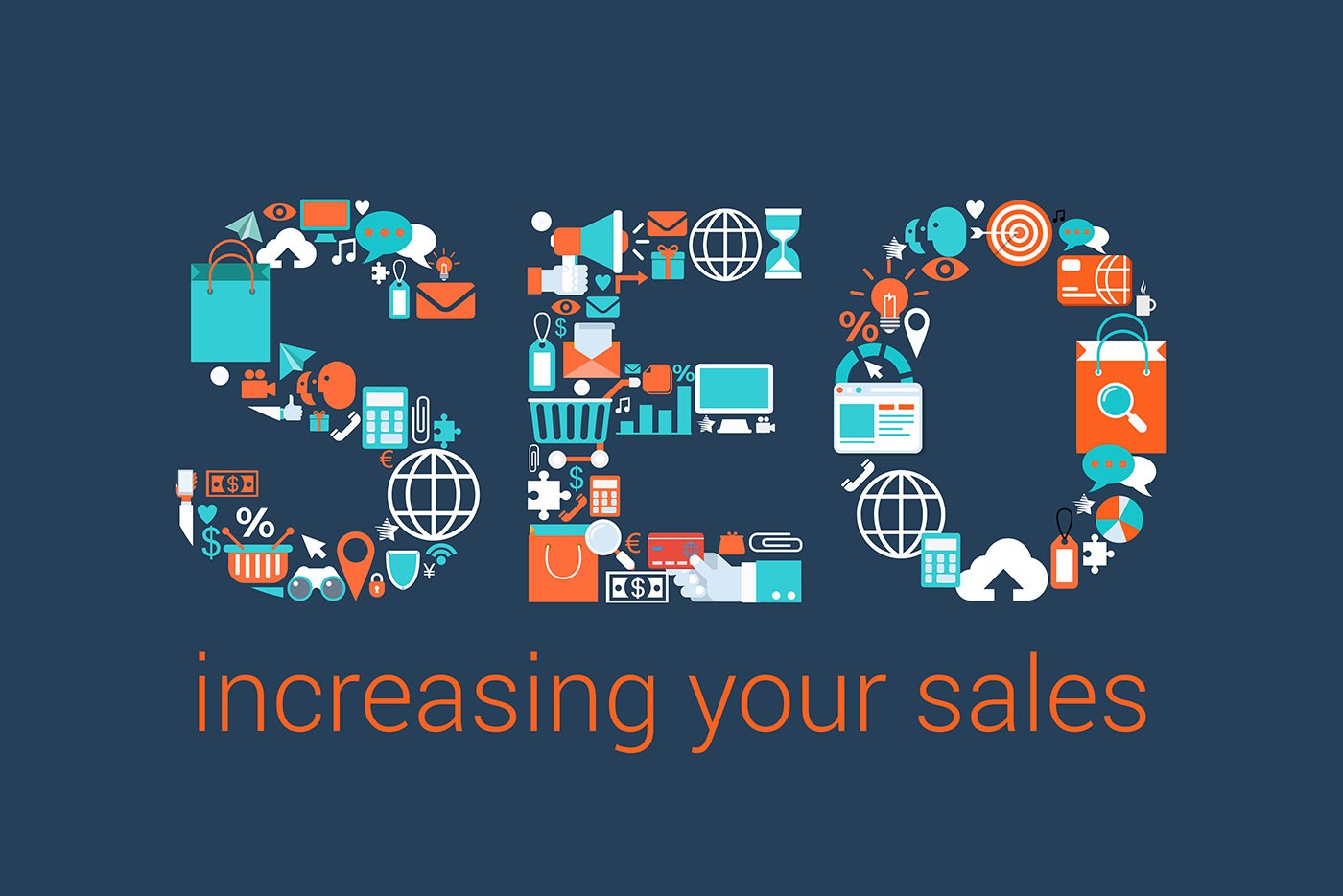Doing SEO for ecommerce products isn’t difficult, but it does require some thought since building an effective product page is a lot different than building more traditional landing pages such as sales pages, squeeze pages, and of course homepages. You need to know things like the best SEO format for your page titles, the terms people use when they Google SEO products, and other high-impact product page SEO strategies.
SEO for product pages is also very multifaceted. In addition to the title and text on the page, you’ll need to optimize things like your URL, images, and meta descriptions. In some cases you may even need to focus on your coding, or the server that your site is hosted on. Either way, you’ll need a good understanding of how SEO for your product pages works, and what strategies are the most effective at driving buyer-ready traffic to your site. This being the case, let’s go over eight product page SEO tips that will help you to get more traffic so that you can make more sales.
1. Mobile Friendly is a Must
Years ago making your website mobile friendly would have been an afterthought, but today it’s something that you absolutely must do if you’re serious about getting targeted SEO traffic to your ecommerce store. The reason for this is that Google has recently rolled out its “Mobile First Initiative.” What this means is that Google will rank mobile friendly websites higher while penalizing sites that aren’t.
The reason that Google has implemented their Mobile First Initiative is because over half of all people who do Google searches these days are doing them on mobile devices. If they do a search and land on a website that isn’t mobile friendly, they’ll click off almost immediately since the site will be nearly impossible to read on their mobile device. This is why Google wants to promote mobile friendly sites and help people to avoid ones that aren’t optimized for mobile devices.
Speaking of which, when it comes to making sure that your site is optimized to display on mobile devices there are several factors that you want to consider. Here is a quick overview of some of the most important factors:
- Text – You want your text to be big and easy to read. Avoid “reverse text” which is white text on a black background. Also make sure that your text is black, not gray, and that you use a sans-serif font.
- Buttons – Your buttons, such as your buy button, need to be big and eye catching. The classic yellow/orange buy button is always a good choice for mobile devices.
- Dynamic Sizing – The key component of being mobile friendly is having a site that will resize based on what kind of device is being used to view it. YouTube is a good example of this since it will resize for desktop, tablets, and phones.
- Formatted Images – On mobile devices your images will be repositioned to fit the screen in many cases. Make sure that the dimensions of your images are such that they will look good on mobile devices.
Something else to keep in mind about being mobile friendly is the fact that Google isn’t the only search engine that’s boosting mobile friendly sites. Other search engines such as Bing and Yahoo! are also doing so. This means that making your site mobile friendly isn’t optional if you want to get SEO traffic. If you need to test your site to make sure it is Mobile friendly you can go to Google’s Mobile-Friendly Test, for example:
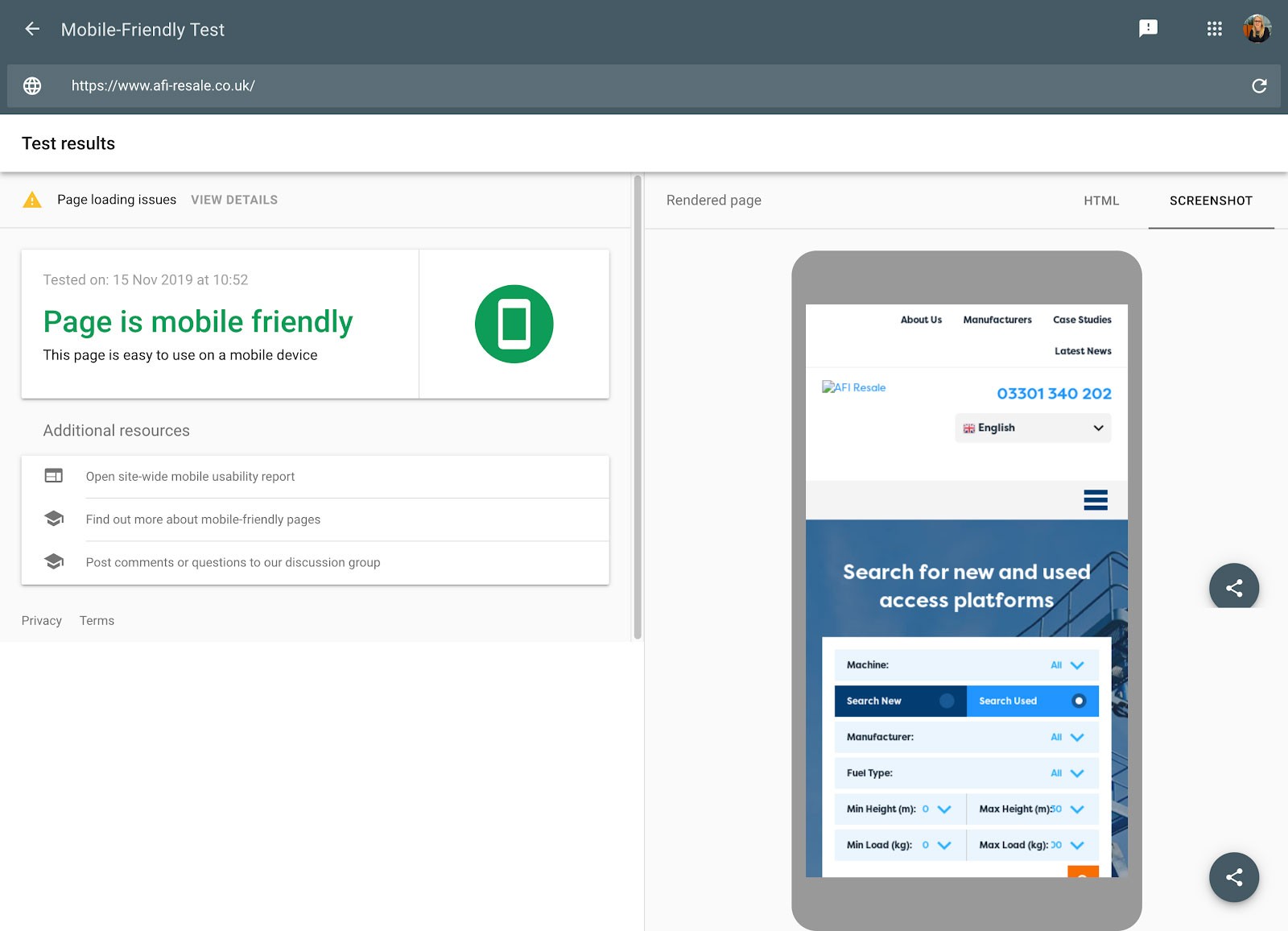
(Image Credit: Google Support)
2. Product Title SEO
When it comes to product SEO your page titles are the most important on-page SEO factor. This means that you need to have a good understanding of the best SEO format for product titles.
First of all, you want your main keyword to be in your title, not just the product name. For example, if you’re selling a specific brand name athletic shoe, you also want to have the word “athletic shoe” in your title. This is because some people will search for the brand name, but others will do a more general search for athletic shoes. By having both keywords you can target both types of searches. For instance:
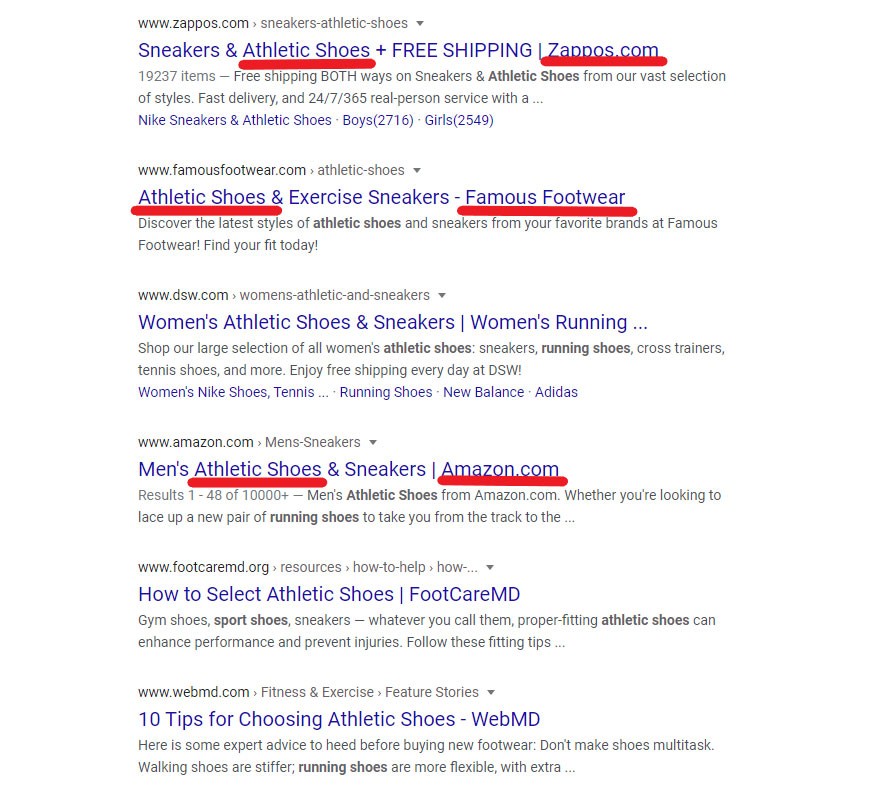
One thing that you’ll need to remember is that in addition to helping your SEO, your title will also play a big role in determining whether or not people actually click through to your product page. This means that your page titles shouldn’t be just a bunch of keyword stuffed nonsense, they need to follow smart copywriting principles as well. Things like presenting a big benefit or making a big promise are great elements to use and will help improve your clickthrough rate.
Balancing the best SEO format for product titles and copywriting can be difficult, but if you use your keywords correctly you’ll see more traffic, and more clicks. Just be aware that your titles should be written according to the actual search terms that your demographic is using. You should always do keyword research before deciding what keywords to use, and how you want to work them into your titles.
Test your SEO in 60 seconds!
Diib is one of the best SEO tools in the world. Diib uses the power of big data to help you quickly and easily increase your traffic and rankings. We’ll even let you know if you already deserve to rank higher for certain keywords.
- Easy-to-use automated SEO tool
- Keyword and backlink monitoring + ideas
- Speed, security, + Core Vitals tracking
- Intelligently suggests ideas to improve SEO
- Over 500,000k global members
- Built-in benchmarking and competitor analysis
Used by over 500k companies and organizations:
Syncs with 
3. Using Images Intelligently
How you use your images can have a big impact when it comes to SEO for ecommerce product pages. As with your titles, your images can benefit both your SEO efforts, and your conversions if used correctly.
The most important SEO factor when it comes to images is how they display on mobile devices as mentioned earlier. This means that you want to check and see how your product page displays on all major device formats (desktop, tablet, and phone) to see if your images are displaying correctly. If not, fix them then check again.
Being smart about your image metadata can also give the SEO on your product page a big boost. Make sure that you take the time to give each image a file name and description using the main keywords for that page. You can also add keyword tags as well. Another benefit of this is that if for some reason your image breaks, the description will still remain and continue to give you an SEO boost.
You Might Also Like
As a general rule, images should only be used if they have a logical place on your product page, and don’t just use images to fill up space. A good example of this would be to use images to show how a product works, or to single out specific features. This also gives you the opportunity to use feature related keywords in the meta data of these images which will further increase your product SEO.
4. Optimize Your Product Description
The meat of your product page is your product description. This is the second most important factor concerning how to SEO product pages. This being the case, you’re going to want to take your time and really write a good product description that is full of SEO keywords yet still conforms to copywriting best practices. In this way writing product descriptions is similar to writing your title.
As for the text, make it big enough to read easily on mobile devices, and make sure that you’re breaking it up by writing in short paragraphs that look easy-to-read at a glance. If someone lands on your page and your product description looks like it would be a chore to read, then they aren’t going to read it. Take a look at the example below, it shows a short and succinct description of their product:
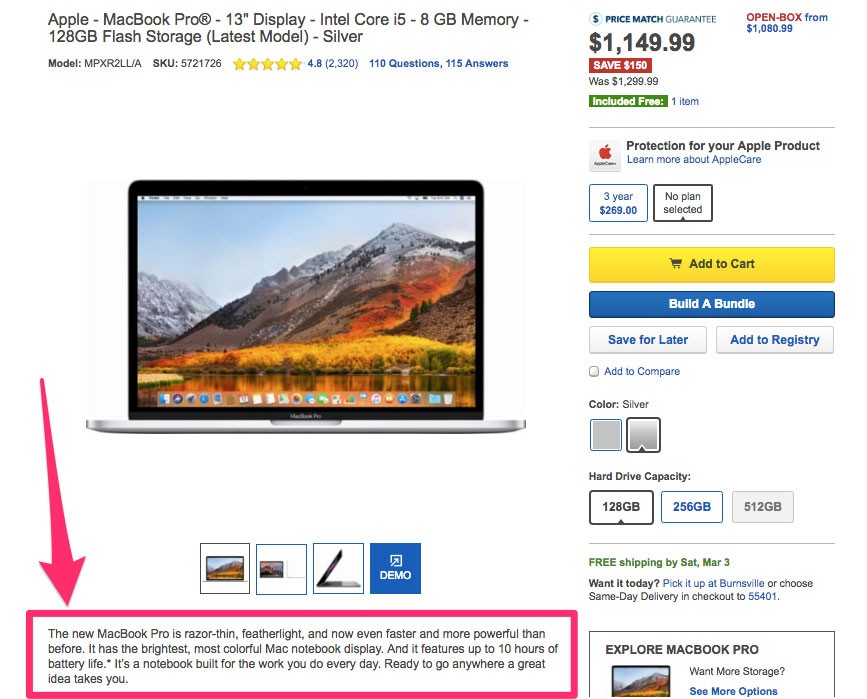
(Image Credit: Neil Patel)
One of the great things about your product description is the fact that different sections and paragraphs can focus on different aspects of your product. This gives you the chance to use keywords that you might not have been able to fit into your title. Just don’t go overboard and begin keyword stuffing since Google and the other search engines will penalize you for that.
As for the copywriting aspect of things, make sure that your product description focuses on the benefits of the product. This can be done by explaining how the various features of the product are directly beneficial to the reader. For example, instead of talking about how strong an umbrella’s shaft is, talk about how it’s strong enough to withstand heavy winds and rain to better keep the user dry.
Lastly, don’t forget to give your product description a strong call to action. This is a huge missed opportunity that many sellers forget to include. The reason having a CTA is so powerful is because people have been conditioned to need to be told what to do instead of making decisions for themselves. Having a CTA at the end of your description can significantly increase conversions in many cases.
5. Use a Meta Description

One thing that you don’t want when doing SEO for ecommerce products is to have Google pick unrelated text from your page to use as your meta description. A meta description is the text that appears on a search results page under your page title, and is something that you want full control over. This means that you should manually write your own meta description for each page.
While keywords are important for SEO, what’s even more important is writing a description that will get clicks. This is one of the few areas in which copywriting is slightly more important than SEO. Make sure that you’re using your main keywords and write a description that will make people want to click. You can use marketing elements such as scarcity, guarantees, special offers, and more to help you get more clicks.
Even knowing all of this, writing a meta description can be difficult. You’ve got a lot of things you need to work into it, and a limited number of characters to do it with. Any characters over the limit won’t be displayed in the search results. To make things a little easier, you should consider using a meta description character counter so that you can see exactly how many characters you have to work with so that you won’t have to worry about going over the limit.
6. Optimizing Your Page URLs
Optimizing your page URLs is something that many people tend to overlook when it comes to SEO for ecommerce product pages. However, your URLs are actually a very big SEO factor so you want to make sure that they’re fully optimized. Once again this mainly consists of using your keywords but there are a few other factors to consider as well.
For one thing, you might want to put your product’s SKU number in the URL if you think people will be that specific when searching for it. Generally speaking, this is only a good idea when it comes to parts used in larger machinery and other B2B products. That said, if your research shows that part of your demographic is searching for SKUs, put them in your URL to capture that traffic.
In addition to having your keywords in your URL, try and make your URL memorable. Sometimes people will click off of your product page and then change their mind later and want to come back. Make this easy on them by having a URL that isn’t overly complicated or hard to remember. Of course, this doesn’t work very well with the SKU strategy since most people won’t be able to remember an SKU number.
Something to keep in mind is that people who Google SEO products have very clear expectations when they do so. Make sure that your URL conforms to these expectations so that they know what to expect when they land on your page and won’t feel misled. SEO is great for driving traffic, but using keywords that don’t actually have anything to do with your page will just lead to a high bounce rate once people find out they’ve been fooled.
7. Optimizing Load Times
Optimizing the load times of your product pages is an often forgotten SEO factor. However, Google and the other search engines have been placing more focus on this factor over the past few years, making it one of the most important strategies for anyone wondering how to SEO product pages.
There are a lot of things to consider when optimizing your load times, some of which may be outside of your control to some degree. Firstly, your load times will be heavily dependent on the server that your website is hosted on. If you feel that your server is slowing you down, you can contact your host about upgrading to a faster server. Many hosting services have servers specifically designed for businesses that can help increase the speed of your load times. There are also websites that can help test your website load times such as Page Speed Insights:
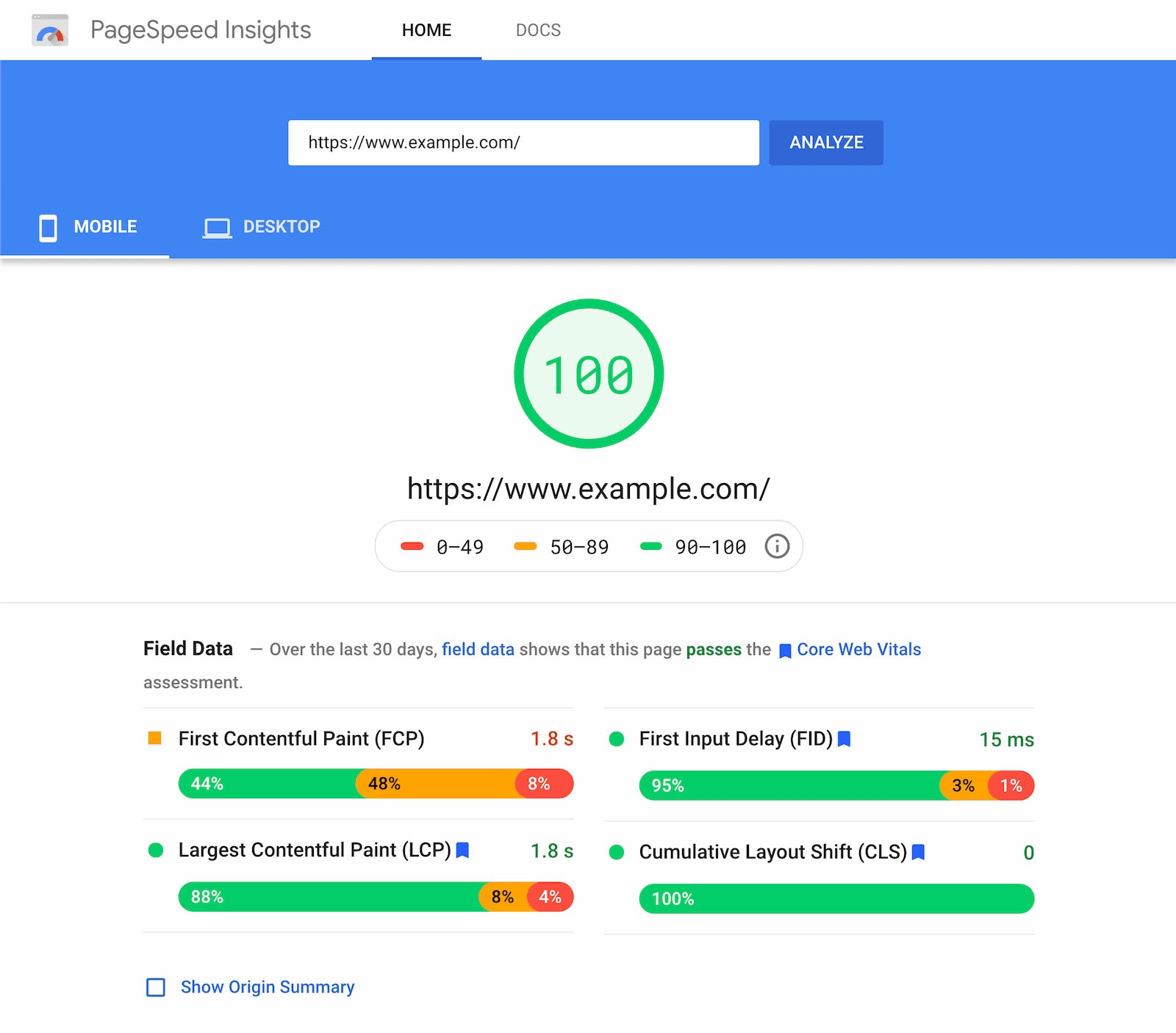
(Image Credit: Web.dev)
Other methods for optimizing your load times are a bit technical in nature. Here is a quick rundown of some of these methods:
- Reduce redirects
- Enable compression
- Use browser caching
- Use a CDN (content distribution network)
- Optimize your code (CSS, JavaScript, HTML)
8. Using Structured Data
This method of SEO is also somewhat technical since it involves coding, but it can be very well worth it since it is a huge SEO indicator for search engines like Google. Structured data is when a web page is coded in a way to make certain types of data standout. This includes things like review scores, bulleted feature lists, and product specific info like sizes, colors, dimensions, etc.
As you can probably guess, not only does structured data make the search engines take notice of your product pages, it also gives people more of the info they’re looking for so that you can get more clicks. For example, someone doing a search for a specific brand of shoe will get to see not just the title and meta description in their results, but also things like sizes, colors, review rating, and other specifications. This information can drastically increase the number of clicks you get.
Keep in mind that to make the most of structured data you need to know exactly who your demographic is, and what they’re looking for. Since this method of SEO is intended to give people very specific info on your product, you want to make sure that you’re connecting with people who want what you have to offer. This means that you may have to dig a little deeper when doing demographics research so that you can tailor each page’s structured data to a very specific demographic subset.
Diib®: Get The Most Out of Your Product SEO
The main thing to remember about SEO for product pages is the fact that your SEO efforts shouldn’t ever come at the expense of your page being optimized for sales. SEO will get people to your page, but it’s then up to your page to do the selling. Don’t ruin your copy with keyword stuffing, needless images just so you can have more image tags, and of course don’t make your URL a garbled mess just so you can target every keyword possible.
We hope that you found this article useful.
If you want to know more interesting about your site health, get personal recommendations and alerts, scan your website by Diib. It only takes 60 seconds.
Also, make sure that you’re doing regular SEO audits, and that you’re tracking your statistics. Diib offers customized metrics designed to take the work out of the tracking and reading of metrics. Here are some of the features of our User Dashboard we’re sure you’ll love:
- Keyword, backlink, and indexing monitoring and tracking tools
- User experience and mobile speed optimization
- Bounce rate monitoring and repair
- Social media integration and performance
- Broken pages where you have backlinks (404 checker)
- Technical SEO monitoring
Click here for your free scan or simply call 800-303-3510 to speak to one of our growth experts.
FAQ’s
Yes, product tags, plainly written, will give you better results and help customers make sense of the product. Remember there are different pathways to the same product, make sure you check tags for readability and relevance.
The SEO product description expounds on the core features and benefits of a certain product and how they can use the product. Don’t just use loads of keywords that don’t make sense, Google is focusing on providing valuable information.
Yes, SEO is a vital component of a good e-commerce website. Focus on product descriptions and tags in order for your products to rank higher than the competition and to be found quickly and easily.
When writing descriptions, don’t list every benefit and feature, no one wants to read a book. Find the top 3 and write about those three and benefits associated.
SEO stands for Search Engine Optimization and it is how to make your content stand out online and rank as high as possible.
